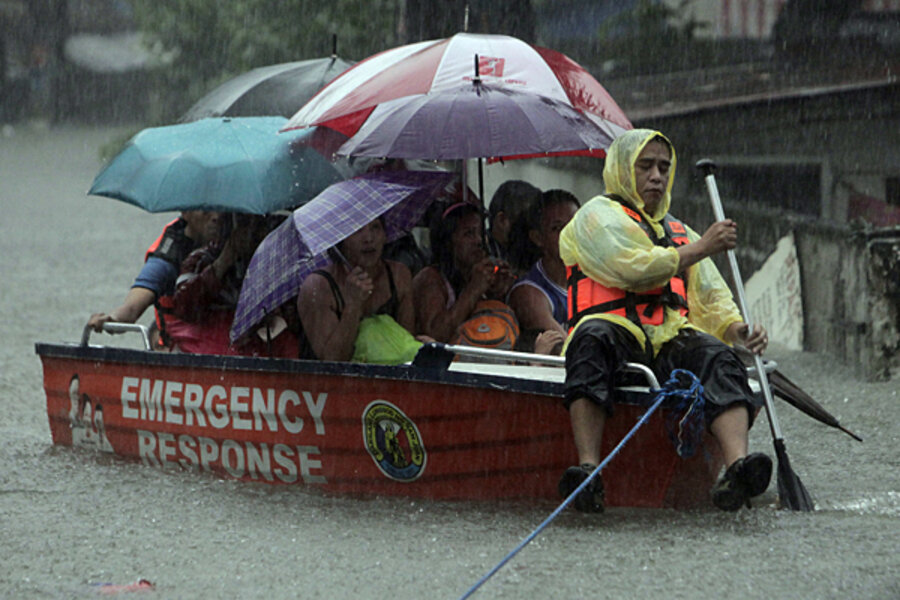Social networks help Filipinos deal with Manila floods
Loading...
| Bangkok
The sprawling Philippines capital of Manila is edging into recovery mode after monsoon rains killed at least 19 people and left much of the city of 15 million under waist and chest high water.
The Philippine government today said people should return to work as soon as possible, as rains eased off early Wednesday. But more rain later hit the city, 60 percent of which is under water, according to national disaster agency head Benito Ramos.
Many are turning to social networking sites to update and get updates on the situation. But even as recovery work kicks into gear, the capital remains vulnerable.
“If we have more rains we will really be in serious trouble,” says Mon Casiple, director of the Institute for Political and Electoral Reform (IPER).
Manila Mayor Alfredo Lim declared a state of calamity in the capital earlier Wednesday. Aurea Calica, journalist with the Philippine Star, says that she is stuck inside the Malacañang Palace Compound in Manila this evening local time. “When I came here the roads were still passable but when I was about to leave before 7 p.m. the streets were already flooded,” she says.
Ms. Calica was corresponding with fellow journalists via Twitter and Twitter's direct message system, highlighting how social networking and cellphones have become a vital link in the rescue and relief chain. People stranded on rooftops have been SMSing for help, while many Filipinos have taken to Facebook and Twitter to post updates and supplement government and media coverage of the floods and rescue work.
According to a July World Bank report titled “Information and Communications for Development: Maximizing Mobile,” there were 101 mobile cellular subscriptions for every 100 people in the Philippines in 2011, up from 41 subscriptions for every 100 people 6 years previously.
Socialbakers.com, which collects data on social networking uptake, reports that there are almost 29 million Facebook accounts in the Philippines, the 8th biggest globally. Measured by percentage of population, it puts Filipino use about the same as German usage. To compare, the Philippines has a GDP per capita of $4,100, while Germany's is $38,400, according to US government measurements.
“The social networks are helping very much in contacting the government and for people letting relatives and friends know all is OK or not,” says Mon Casiple, speaking by telephone from Manila.
As the rains continue and the government urges people to get back to work, there have been no major criticisms of the relief effort so far, in contrast with previous floods in the city.
“Even as the situation remains of concern for so many citizens affected by the rain and flooding, it is imperative that we begin returning to normalcy as soon as possible," said Edwin Lacierda, spokesperson for the country's president, Benigno Aquino III.
Mon Casiple says that improvements in monitoring in the flood-prone country have helped, and that the government response so far has been satisfactory. “There are small problems at local government level but the national level response has been good,” he adds.
However schools will remain closed in the capital, and in some flood-hit areas elsewhere on Luzon, the largest of the 7,000 or so islands that make up the Philippine archipelago. The country's Department of Education said in a statement earlier today that some schools are being used as shelters for the tens of thousands made homeless, for now, by the water.
“We need to make sure that we have enough supplies to provide for the needs of evacuees under our care,” said Secretary of Education Br. Armin A. Luistro. “Let us work hand in hand with our city and [local] officials to ensure that urgent needs are provided given the current situation.”
[Editor's note: the original version of this story misspelled Ms. Calica's first name.]







